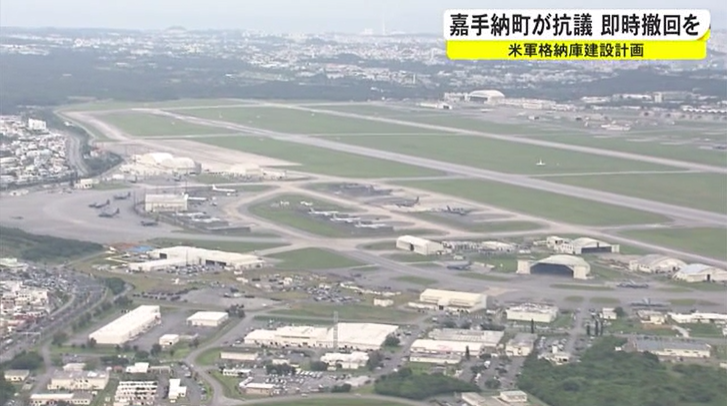After 8 years, the "outline" is changed, and Japan wants to "forcibly fight" with China
Author:Chang'an Street Knowledge Time:2022.09.05
According to Japan's "Yomiuri Shimbun" reported on the 4th, the Japanese government decided to revise the "Development Cooperation Outline" in the first half of 2023, that is, Japan provided government development assistance (ODA) to developing countries.
It is reported that the Japanese government will hold an expert symposium recently to strive to finalize the draft during the year. If it goes well, this will be the first time in Japan to revise the outline in 8 years.

Report screenshot
The ODA policy is one of the diplomatic methods for the restoration of the economy after the war in Japan. It was originally to expand the commodity and raw material market. In 1992, Japan formulated the "Government Development Assistance Outline" for the first time. It was revised twice in 2003 and 2015. In 2015, it was renamed the "Development Cooperation Outline".
Chang'an Street Knowledge (WeChat ID: CapitalNews) noticed that the upcoming 2023 version of the "Development Cooperation Outline" focused on economic security, and its meaning aimed at China is even stronger.
Play the "security card" again
In February 2015, the Japanese cabinet wrote the word "national interest" for the first time in the "development cooperation outline".
At the time of Abe's administration, ODA policy allowed Japan to provide "non -military purposes" assistance to other countries for the first time. This is different from the policy of "assisting developing countries in the field of people's livelihood that has nothing to do with the army" that has been following before, and has begun to develop in the direction of strengthening security and pave the way for the legalization of "military aid". One example is that Japan has repeatedly assisted the coast patrol ships with nationals with territorial disputes with China.
The subsequent outline is even more aid for "security guarantee" year by year. In order to check and balance China, in 2017, Japan provided different degrees of loans to the Philippines, Indonesia, Vietnam and other countries in the form of "economic assistance", increasing its influence on Southeast Asian countries, and pushing value diplomacy.
Recently, considering the problems of food chain interruption caused by the food chain interruption caused by the grain, energy crisis, and new crown pneumonia's epidemic caused by the conflict of Russia and Ukraine, the Japanese government intends to further emphasize economic security issues in the new outline, and plans to join the policy of "creating a strong supply chain" policy. measure.

Kishida Wenxiong Data Map. Source: Visual China
"Economic Security" is the top priority of the Kishida Wenxiong government. In May this year, the Japanese Senate passed the "Economic Security Promotion Act" and also planned to be implemented in 2023.
An important part of the bill is to strengthen the construction of domestic supply chain in Japan. Japanese media analysis, on the one hand, aims to coordinate with the United States and Europe to reduce economic dependence on China and Russia; on the other hand, strengthening economic security policies in order to cope with China, which has risen in the field of cutting -edge technology, and Russia, which is still in Russia who are still in the war, Essence
Forcibly fight
With the changes in the domestic and international situation, Japan's ODA budget has also experienced up and down. According to statistics, Japan was the world's largest foreign aid country in 1989. At the peak of 1997, the ODA aid budget was 116.87 trillion yen. Since then, the ODA budget has decreased year after year, and the first growth (increase is 1.8%) in more than ten years in 2016, and the budget of 2022 (561.2 billion yen) has been almost halved compared to its peak period.
Japanese media reports that due to severe financial conditions, the ODA budget is expected to not increase significantly. However, Japan's quick success, and the pace of "forcibly competing" with China could not be kept.
When the Ministry of Foreign Affairs of Japan applied for the 2023 budget, in order to revise the outline, about 110 billion yen was listed as the ODA budget to assist the construction of national infrastructure in the Asia -Pacific region. This amount increased by 20 billion yen compared to 2022.
In order to contain China and promote the so -called "free and open Indo -Pacific", the 2023 budget application amount of the Ministry of Foreign Affairs of Japan also increased by 15.3%from the previous year to 796.1 billion yen.
In addition, the Ministry of Defense of Japan claims that the relevant budget of international order based on universal values such as democracy has increased by more than 40%from the previous year to 212.1 billion yen.
Hype "debt trap"
After Kishida Wenxiong took office, his cabinet has spared no effort to cooperate with the "Chinese debt trap" in the United States and Western.
Japanese media reports that behind the revision of the new version of the "development cooperation outline" is the Japanese government intending to use ODA aid strategically to clearly show that it has achieved the "free and open Indo -Pacific region" and economic security. Loans increase their influence on developing countries.
If you do n’t say this, do n’t you say it, what is the plan to do in Japan?
At the end of August, the Japanese side announced at the 8th Tokyo African Development International Conference that it would aid US $ 30 billion in Africa, and also brought "private goods", emphasizing that "it is different from China" and committed to creating the so -called higher transparency.
However, African public opinion remained cautious about this. "Since the end of the Cold War, the number of great powers in Africa's politics, diplomacy, and economy has risen. But to date, Japan has been stamped by China." Uganda's "Independence News" said Compared with the total amount of Japanese loans and investment is still small.
In fact, Japan's foreign aid is not as discounted as it claims. CNN has quoted data from the Philippine Ministry of Finance that considering comprehensive risks such as project costs, loan denominations, and foreign exchange depreciation, Japan's actual interest rate in Japan is very close to China. And the interest rate of Chinese loans is fixed and will not change over time.
A Presidential spokesman for the Philippines also said that the Philippines' project debt to China (by 2022 will account for 4.5%of the total debt), compared with about 9.5%of the total debt of the total debt to Japan by 2022)part".China's debt is called "trap", and Japan's debt is "investment". This phenomenon of "dual standards" when this encounters China is not the first time that the Chinese have seen it.
Many latest studies in Europe and the United States have shown that there are no evidence that there are so -called "debt traps", and there are no cases that China use debt to repay difficulties and seize other countries' assets or resources.
Data show that 80%of the foreign debt of Sri Lanka comes from multilateral institutions such as the World Bank and Wall Street investors, which accounts for only 10%of its total foreign debt to China.Non -fact.
As the Chinese envoy said in the EU, debt issues are worthy of attention, and all parties in the world need to coordinate and resolve them together.However, debt issues cannot be politicized, let alone a narrative weapon in one country against another country.
- END -
The U.S. Army Jiashana Base in Japan builds large facilities near the house and Japanese residents are angry and protest

Jiashanna Base (Okinawa TV)Overseas Network, August 3rd. According to Japan's Okin...
Protests broke out in the U.S. Capital: Anti -abortion supporters burned the national flag on the street, and the police policemen were waiting for

According to the US Fox News, on the 24th local time, thousands of American people...